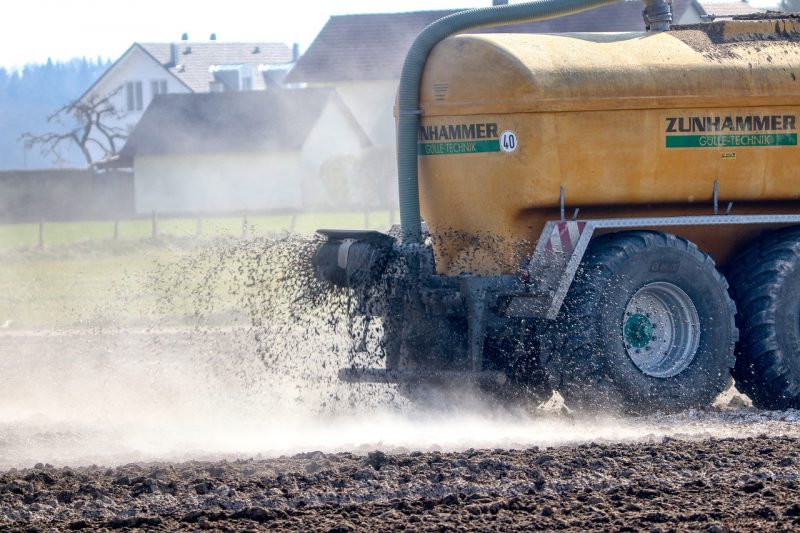You need to know how to calculate liquid fertilizer rates using formulas, and not just how to measure fertilizers. Remember that fertilizers will only be able to do their job well if you use them appropriately for your garden and plants. One can assume that fertilizer application will only be optimal if you know the correct rate and measurement.
More so, proper fertilizer management plays a significant impact on the environment and other living things close to the area. Those who need to use liquid fertilizer can do basic calculations to determine the rate themselves. And as time goes on, you can get used to the concepts, making rate calculations almost like second nature.

Comprehensive Guide On How To Calculate Liquid Fertilizer Rates
Step #1. Understand the formula
The first step in calculating liquid fertilizer rates is understanding the formula. It might be overwhelming to read the formula upon a glance, but it is straightforward. Over time, you’ll get comfortable in inserting the values. For example, read the label to find the N-P2O5-K2O content of your fertilizer.
You’ll also need to do a soil test, which is crucial before handling fertilizers. This will let you know your target rate and use the ideal fertilizer that will provide your plants’ needs. The third part of the formula is the total area of where you’ll use the fertilizer, which is self-explanatory.
And lastly, what differentiates a liquid fertilizer rate from other rates is that you’ll also need to know the material’s density or weight. This is applicable only if you’re using a liquid fertilizer. Understanding these four values will help you apply the formula and calculate it without issues.
Step #2. Apply the formula
Example #1.
To further help you understand the formula, let us use an example of calculating the liquid nitrogen fertilizer rate for a crop like corn. Using the formula, you will find the N application rate in gallons per acre and the amount you’ll need to apply 160 pounds of N on the area. You will need the values mentioned earlier, which means you should be aware that a 30% UAN liquid N fertilizer will suffice for 500 acres of corn.
In this example, 10.86 pounds per gallon of fertilizer contains 30% nitrogen, which means you’ll get 0.30 pounds of N per pound of the fertilizer. One can simplify the calculation as 10.86 pounds per gallon multiplied by 0.30 pound Nitrogen per pound of fertilizer, and you’ll get the pound of N per gallon of fertilizer.
You will also get the gallon of UAN per acre by dividing 160 by the amount you’ve had previously. Using the values from the previous two computations, you can get the tons for 500 acres. Overall, the calculation for liquid fertilizer rate is similar to how you’d compute the rate of dry fertilizers.
Still, you’ll also account for the liquid fertilizer’s weight to find out its nutrient content.
Example #2.
If you’re still confused with using and applying the formula, a simplified equation would be multiplying the required nutrient application rate by 100 and dividing it by the percent nutrient in the fertilizer multiplied by the fertilizer weight. Let’s say that you need to apply 15 pounds of nitrogen using a liquid fertilizer with 30% nitrogen per weight, and the weight of UAN is 10.86 pounds per gallon. How can you use the formula?
You’ll get the fertilizer rate first, which means multiplying 15 by 100 and dividing it by 30. You’ll then get 50 pounds, and you’ll divide this by 10.86. Therefore, you will need 4.6 gallons of liquid fertilizer.
How To Calculate Nutrient Requirements
Besides the liquid fertlizer rate, you also want to know how to calculate the nutrient requirements. Remember that you will only get the fertilizer’s correct rate if you know the crop nutrient requirements. Therefore, do a soil test first to ensure that you’ll meet the goals of your garden’s productivity.
Remember that over time, the nutrients in the soil gets depleted. Some nutrients require a yearly application, while others require more frequent addition. An annual application of phosphorus and potassium should suffice, but nitrogen might be more periodic.
If you’re growing in the greenhouse, you also need to adjust the amounts because the fertilizer recommendations are commonly used for large areas. You don’t want to guess the amounts due to the risk of over-fertilizing and under-fertilizing. You can use a simple equation of pounds recommended per 1000 square feet multiplied by square footage divided by 1000 square feet.
Conclusion
Knowing and calculating fertilizer rates is crucial to avoid over-fertilizing and under-fertilizing. You can learn how to calculate liquid fertilizer rates by understanding the formula and how to apply the values. While it can be daunting to see how lengthy the formula is, it’s straightforward.
One can simplify it into the required nutrient application rate multiplied by 100 and divided by the percent nutrient in fertilizer multiplied by the fertilizer weight. You’ll be taking the liquid fertilizer’s weight into account because this pertains to its nutrient content. Additionally, don’t forget the importance of soil test before calculations because it will ensure your plants’ fertilizer needs and avoid problems.
With a proper understanding of the values and the formula itself, you should be able to calculate the rate of your liquid fertilizer without confusion. You can check out different examples from university extensions as well.
